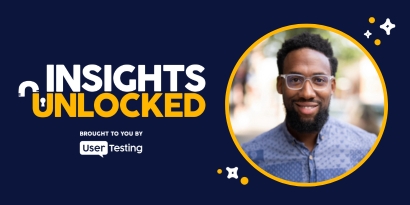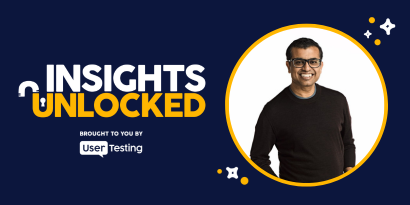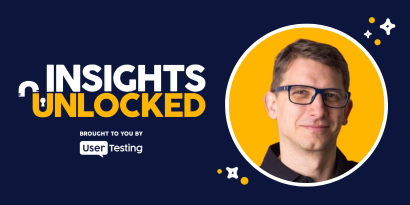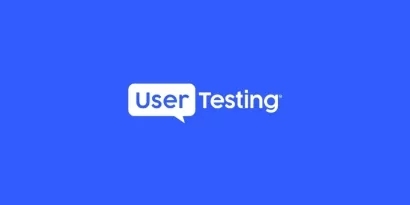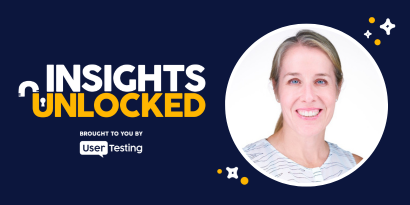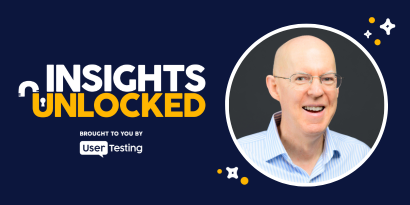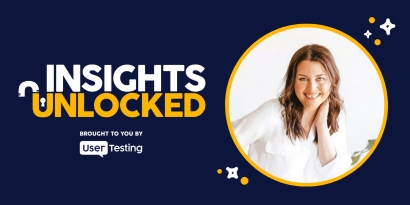
Episode 173 | June 02, 2025
Designing futures with imagination and foresight
Discover how futures thinking and imagination can empower leaders to navigate uncertainty and design better outcomes with Lisa Kay Solomon.
Imagining the future: Why leaders need more than vision to succeed
When was the last time you practiced your imagination at work?
If that question catches you off guard, you’re not alone. In most boardrooms, “imagination” rarely gets the same air time as “strategy,” metrics, or execution. But in a world defined by rapid disruption and growing uncertainty, imagination may be one of the most critical—and underused—leadership skills.
That was a key takeaway from this Insights Unlocked podcast episode, where Jason Giles spoke with Lisa Kay Solomon, designer in residence at Stanford’s d.school and a leading voice in futures thinking.
Lisa, a strategist and educator known for her work at the intersection of design, foresight, and leadership, makes a compelling case: the future doesn’t need to be predicted, but it does need to be imagined.
The wake-up call that changed everything
Lisa began the conversation by reflecting on the moment that reframed how many leaders view change: the COVID-19 pandemic.
“Covid alerted leaders everywhere to just how vulnerable we are to abrupt disruption,” she said. “The unimaginable is only unimaginable if you don’t allow yourself to imagine it.”
It was a wake-up call that exposed the limits of traditional strategic planning. Five-year roadmaps quickly became irrelevant. The present wasn’t just uncertain—it was volatile, complex, and ambiguous. Or as Lisa put it, “peak VUCA”—a military acronym for volatility, uncertainty, complexity, and ambiguity.
From hindsight to foresight
Most of us were trained to look backward to move forward. We study history, analyze past performance, and project future outcomes based on what’s already happened. But Lisa emphasizes that while history teaches context and critical thinking, we also need to develop skills that help us anticipate what hasn’t happened yet.
This is where futures thinking enters the picture. It’s not about crystal balls or guesswork; it’s about expanding your awareness of possible futures and building strategies that are robust across a range of scenarios. Lisa calls this anticipatory leadership—a practice rooted in strategic foresight, imagination, and proactive decision-making.
“We can’t predict the future, but we can get better at anticipating it,” Lisa said.
GUIDE
The executive's guide to empathy-driven ROI
Scenario planning as a strategic superpower
One of the most powerful tools in the futures thinking toolkit is scenario planning. Unlike traditional forecasting, which assumes a linear progression of trends, scenario planning explores multiple plausible futures. It helps leaders test their strategies against uncertainty and identify opportunities—and risks—they might otherwise miss.
Lisa shared how she facilitated a scenario planning exercise with her colleagues at Stanford during the early days of the pandemic. Within 24 hours, they shifted from confusion to clarity, identifying concrete actions they could take to support their students.
“The goal isn’t to predict the future,” Lisa explained, “but to unearth more robust moves we could do even amid that heightened uncertainty.”
Why leaders must reclaim imagination
It might sound counterintuitive, but in the age of AI and big data, imagination is becoming a key differentiator. Lisa argues that imagination isn’t just a creative flourish—it’s a leadership competency.
“In most MBA programs, there’s not a class on ambiguity or imagination,” she noted. “And yet, these are the exact skills we need to navigate the unknown.”
But imagination isn’t something you either have or don’t. Like any skill, it can be practiced and developed. Lisa encourages leaders to give themselves permission to “stretch,” take risks, and create space for possibility—especially in a culture that often values performance over potential.
Practical tools for future-ready thinking
So how can leaders build these skills into their workflows and cultures? Lisa offered several practical tools that blend futures thinking with design principles:
- Trend analysis: Start by reviewing trend reports and identifying what’s relevant (or surprising) to your business.
- Futures wheel: Visualize how one trend could ripple across multiple domains through first-, second-, and third-order effects.
- Rapid prototyping: Treat ideas as experiments. Design small tests to learn and adjust, rather than waiting for perfect information.
- Scenario debates: Role-play utopian vs. dystopian futures based on emerging technologies to surface blind spots and hidden assumptions.
“Best practices don’t exist in the future—we have to invent them.” – Lisa Kay Solomon
The challenge of short-termism
One of the biggest barriers to long-term thinking? Short-term incentives.
Lisa pointed out that many organizations are trapped in a cycle of quarterly KPIs, political turf wars, and a lack of training in strategic foresight. It’s what she and her co-author called “the doom loop” in their book Moments of Impact.
“To shift this, we need leaders who value growth as much as performance, and who are willing to plant seeds for a future they may not fully see,” she said. One of her favorite metaphors is Roman Krznaric’s concept of the good ancestor—someone who thinks generationally and leaves a legacy that benefits others.
Creating civic futures with joy
Futures thinking isn’t limited to corporate strategy. Lisa shared a compelling example of applying these principles to civic innovation. She hosted an event called The Futures Happening, bringing together democracy makers, movers, and multipliers to explore the future of civic engagement.
Each participant represented a real-world example of positive change—from public libraries and community organizers to athletes promoting civic causes. The event sparked new connections and conversations, and even inspired a city leader in New Mexico to replicate the model using Lisa’s Civic Imagination Playbook.
“Just negating the bad stuff won’t get us to that longer term future of where we want to be” Lisa said.
Attention is the new currency
Another provocative insight from Lisa: our attention is being monetized, and it’s costing us our ability to think long term. In a world of constant pings and fragmented focus, carving out time to think deeply and stretch your perspective is a radical act.
Gloria Mark and other scholars have explored how attention impacts our creativity, our decision-making, and even our optimism. As Lisa emphasized, “being intentional about our attention is foundational to future-ready leadership.”
Start small, stretch big
If this feels overwhelming, Lisa reassures leaders that futures thinking doesn’t require huge overhauls. It starts with small commitments:
- Set aside one hour a week to explore emerging trends.
- Facilitate a simple scenario planning workshop with your team.
- Encourage storytelling about what a “better future” could look like for your customers.
In her Stanford classes like Inventing the Future and View from the Future, Lisa has seen firsthand how these small shifts change how students—and organizations—approach uncertainty.
You have what it takes
At the end of the episode, Lisa shared one of her favorite reflections from a student:
“I used to think that imagining the future was a gene-like talent, only for a select few. Now I think I have what it takes to practice and get better at this.”
And that’s really the point. The future doesn’t belong to the experts. It belongs to the curious, the courageous, and the imaginative.
“The future is already here—it’s just unevenly distributed," Lisa said. "The question is: are we brave enough to go visit it?”
Episode links
- Take your research to the next level: This webinar explores how to align research with strategic objectives, emphasizing anticipatory leadership and the integration of customer insights into long-term planning.
- Human insight for UX research teams: This guide offers strategies for UX teams to incorporate human insights into their research processes, fostering imaginative leadership and future-ready thinking.
- Why your UX research teams need to change: This episode discusses transforming UX research functions into strategic insight and foresight teams, resonating with the concepts of futures thinking and imaginative leadership.
- Moments of Impact by Lisa Kay Solomon and Chris Ertel
- Design a Better Business by Lisa Kay Solomon, Patrick Van Der Pijl, and Justin Lokitz
- Lisa Kay Solomon on LinkedIn
- Jason Giles on LinkedIn
- Leading like a Futurist course on LinkedIn Learning
- Harvard Business Review: 5 Pandemic-Era Lessons on Leading Through Change
- Lisa's Stanford d.school profile
- The Long Now Foundation
- Futures Happening
- Progressive Hedonist by Dana Cowin
